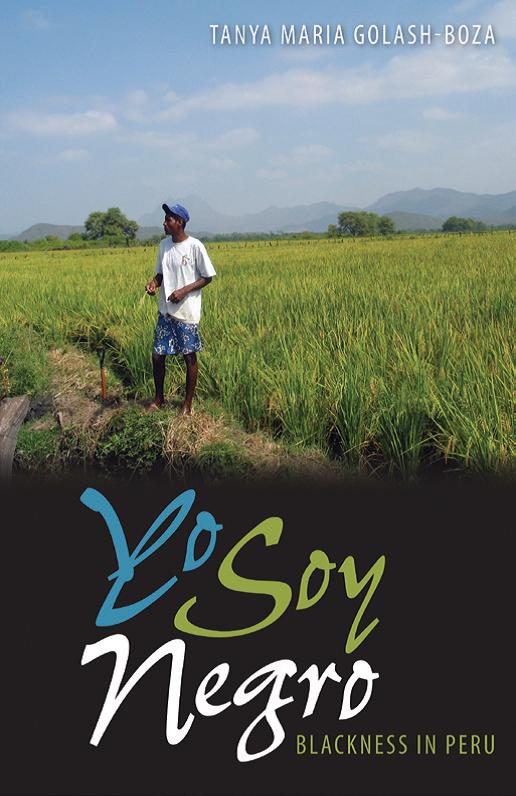This summer, we are visiting Ingenio, the small town in northern Peru where I did my dissertation research in 2003, and the town that is the central focus of my book –
Yo Soy Negro: Blackness in Peru. It has been nearly nine years since we lived here, and six years since we have last visited. Each day during my week-long visit, I am reminded of things that have changed, and things that have not.
The findings from my dissertation research with regard to discourses on color still hold. Two days ago, a resident told me that a young woman had beautiful children because she married a
serrano – a mountain person who has light hair and green eyes. Villagers often admire the long, brown, straight hair of my daughters. Yesterday, another resident told me that my children should speak to her in Spanish, not English. She said, “we don’t know how to speak English; we are black.” Everyday slights at those whose skin is darker continue. At the same time, the recognition of blackness continues. I overheard a man say to another that there were several men at a meeting who were “black like me.”
Returning after six years, I see how some people have aged beyond their years, while others look the same. When I lived here, there was a beautiful young woman with black, silky curls who was in her last year of high school. Towards the end of my stay, she became pregnant and married the father of her child – a young man who lived down the street. As an outgoing, intelligent young woman, I was disappointed that she had decided to set her fate so soon in life – as a mother and wife in rural Piura. I saw her yesterday, and although she is but 26, nearly all of her youthfulness has been drained away. The mother of two children and pregnant with a third, she looked as though she could easily be in her mid-thirties. There is more to life than a smooth face, of course, but it seems the lines on her face are a sign of all that has transpired in the past six years.
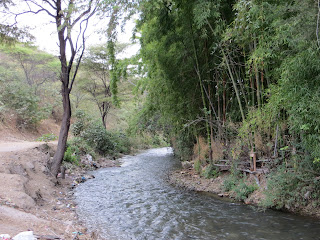 |
| The Canal in Ingenio, where women wash clothes |
On the other hand, there are people here for whom it seems the years have not passed. There are two other women I saw yesterday, both of whom have married and had one child, who look nearly the same as when I left. With just one child and spouses with steady work, these women have a healthy diet and do not have to stress about where their next meal will come from. Many women have told me that they are having one or two children, and no more. This differentiates them from their mothers, who often did not have access to birth control, and could not make these decisions.
When I lived in Ingenio in 2003 with my husband, twin daughters, and newborn baby girl, there was no electricity, and running water only two hours every other day. In 2012, there is electricity all day; cellphone service from all major companies; and even a small Internet café with two computers. Water service, however, remains exactly the same. I described Ingenio in my book “
Yo Soy Negro” as being on the edge of globalization. It seems to have moved a bit closer to the center in terms of access to technology. There was but one tractor in town when we lived here. Now, there are several. More people are growing vegetables for export; and there are more motorcycles, mototaxis, and trucks in town than before. Many families have improved their houses, mostly with help from their children in Lima.
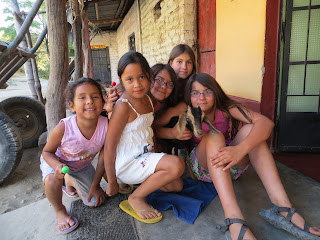 |
| My children, hanging out with new friends in Ingenio |
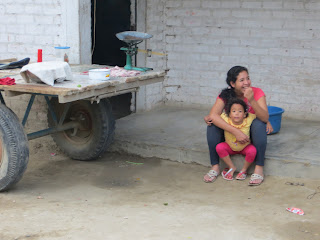 |
| A mother laughing with her young daughter |
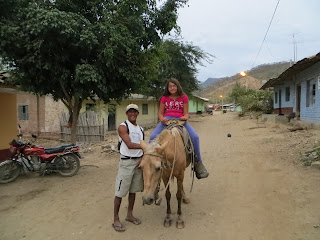 |
| This man - disabled from typhoid fever - let my daughter ride his horse |
Yesterday, I visited the house of a woman who had a small adobe house with dirt floors when we were last here. She has three sons, all of whom are working in Lima. She told me proudly that her children have helped her improve her home. Together, her sons have widened and painted her house, transforming it into a bright, sunny home. In addition, they have put down a cement floor and put in glass windows and doors in her home, replacing old wooden ones. Her daughter works in Piura, and has helped her create a small store in the front of her home, where she sells cold drinks and a variety of snacks. Salaries have gone up for workers at the bottom rungs in Lima – meaning that more cash has flowed back to Ingenio than before. In this brief visit, I am unable to assess the full extent of development, but it pleases me to see some of the people here living more comfortably than before, and to know that some townspeople have the world at their fingertips with access to Internet.
Villagers also continue to work locally to improve the town. One villager told me of a project where people got together to build a small park with benches on upper side of town. She hopes to get together the funding to put a playground in the park. This same woman told me how they got Internet in the town – through a public/private partnership to install Internet in small communities.
Gender roles haven’t changed much in town. Women are still those doing the washing by the river and cooking, while men are out working in the fields and driving mototaxis. My children are oblivious to these gender norms, and thus ask the father of the house where we are staying for limes for their food or water to drink. He doesn’t know where the things are kept, so asks his wife to get it for them. I was a bit impressed, however, when he helped his wife clear the table. I suppose individuals can change, even as they age.
